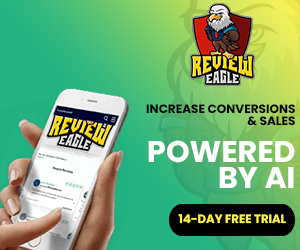The advertising industry is no exception. As we enter the year 2024, the landscape of advertising is undergoing a revolutionary transformation, with new strategies and innovative approaches taking center stage.
Imagine a future where every advertisement is tailor-made specifically for you, capturing your attention and resonating with your unique interests. This is the power of innovative advertising strategies in 2024. Brands are no longer relying on generic messages to reach their audience. Instead, they are harnessing the power of data analytics and artificial intelligence to create personalized campaigns that leave a lasting impression.
In this blog post, we will dive deep into the world of advertising in 2024, exploring the latest trends, technologies, and tactics that are reshaping the industry. From augmented reality ads that bring products to life before your eyes, to interactive social media campaigns that encourage user participation, we will uncover the secrets behind these game-changing strategies. Throughout this post, we will also provide practical tips and insights for businesses looking to unleash innovation in their own advertising efforts. Whether you are a small startup or a multinational corporation, understanding and embracing these revolutionary strategies is crucial for staying ahead of the curve.
So, fasten your seatbelts as we embark on a journey into the future of advertising, where creativity knows no bounds and innovation reigns supreme. Get ready to discover the power of truly impactful advertising strategies in 2024!
Personalized Advertising: Connecting with Audiences on a Deeper Level
One of the most significant advancements in advertising strategies for 2024 is the rise of personalized advertising. Gone are the days of generic messages that are easily ignored by consumers. In this new era, brands are leveraging data analytics and artificial intelligence to create campaigns that resonate with individuals on a deeper level.
Imagine scrolling through your social media feed and seeing an advertisement that feels like it was made just for you. This is the power of personalized advertising. By analyzing user data such as browsing history, purchase behavior, and demographic information, brands can tailor their messages to match the interests and preferences of each individual consumer.
Personalized advertising goes beyond simply using a person’s name in an email or displaying products they have previously viewed. It involves understanding their needs, desires, and motivations to create highly targeted campaigns that truly speak to them. This level of personalization not only captures attention but also builds trust and loyalty among consumers.
For example, imagine you are a fitness enthusiast who frequently searches for workout routines online. With personalized advertising, you might start seeing ads for fitness apparel or nutrition supplements that align with your interests. These ads would not only catch your attention but also provide valuable information and recommendations tailored specifically to your needs.
Innovative technologies such as machine learning algorithms and predictive analytics play a crucial role in making personalized advertising possible. These tools analyze vast amounts of data in real-time to identify patterns and trends, allowing brands to deliver highly relevant content at the right time and through the right channels.
To leverage personalized advertising effectively, businesses need to invest in robust data collection systems and advanced analytics capabilities. They must also prioritize privacy and transparency by obtaining user consent for data usage and ensuring compliance with relevant regulations.
Interactive Social Media Campaigns: From Passive Viewers to Active Participants
In the world of advertising, engagement is key. Traditional ads often fail to capture the attention of consumers who have become adept at tuning out promotional messages. This is where interactive social media campaigns come into play.
Interactive social media campaigns encourage users to actively participate in the advertising experience, transforming them from passive viewers into engaged participants. These campaigns leverage the interactive nature of social media platforms to create immersive and memorable experiences that leave a lasting impression.
One popular example of an interactive social media campaign is user-generated content contests. Brands invite their followers to create and share content related to their products or services, such as photos, videos, or testimonials. This not only generates buzz around the brand but also fosters a sense of community and encourages user involvement.
Another example is gamified advertisements that incorporate elements of gameplay into the advertising experience. Brands create interactive quizzes, puzzles, or challenges that users can participate in while being exposed to brand messaging. By making the ad itself entertaining and rewarding, brands can capture and hold the attention of their target audience.
Interactive social media campaigns also provide valuable opportunities for brands to gather user-generated data and insights. By analyzing user interactions and responses, brands can gain a deeper understanding of their audience’s preferences and behaviors, allowing them to refine their targeting strategies further.
Voice-Activated Advertising: From Smart Speakers to Voice Search Optimization
The rise of voice-activated devices such as smart speakers has opened up new avenues for advertising in 2024. Voice-activated advertising involves leveraging voice assistants like Amazon’s Alexa or Apple’s Siri to deliver targeted messages directly to consumers.
Voice-activated ads are seamlessly integrated into users’ daily routines, providing them with relevant information or offers at the moment they need it most. For example, a user might ask their smart speaker for a recipe, and in response, receive a sponsored message from a food brand offering discounts on ingredients.
Another aspect of voice-activated advertising is voice search optimization. As more and more people use voice commands to search for information online, brands need to ensure that their content is optimized for voice queries. This involves understanding the natural language patterns used in voice searches and tailoring website content accordingly.
Voice-activated advertising presents unique challenges and opportunities for businesses. On one hand, it allows brands to deliver highly targeted messages directly to consumers’ ears. On the other hand, it requires adapting to new technologies and understanding the nuances of conversational language.
Gamification in Advertising: Turning Ads into Playful Experiences
Traditional advertisements are often seen as interruptions or annoyances by consumers. However, gamification in advertising aims to change this perception by turning ads into playful experiences that users actually enjoy.
Gamified advertisements incorporate elements of gameplay such as challenges, rewards, and competition into the advertising experience. By making ads entertaining and interactive, brands can capture the attention of consumers who would otherwise ignore traditional ads.
One example of gamification in advertising is branded mobile games. Brands create mobile games that are not only fun to play but also feature their products or services as part of the gameplay. This allows users to engage with the brand in a positive and memorable way while still being exposed to promotional messages.
Another example is interactive video ads that allow users to make choices or interact with the content while watching. This creates a sense of agency and involvement, making users more likely to remember and engage with the brand message.
Gamification in advertising also provides opportunities for brands to collect valuable data on user preferences and behaviors. By tracking user interactions and gameplay patterns, brands can gain insights that inform future marketing strategies and product development.
However, it is important for brands to strike the right balance between entertainment and promotion in gamified advertisements. The focus should be on creating a positive user experience rather than overwhelming users with excessive branding or intrusive messages.
The advertising industry is undergoing a revolutionary transformation in 2024. Personalized advertising, interactive social media campaigns, voice-activated advertising, and gamification are just a few of the innovative strategies that are reshaping the way brands connect with their audiences. By embracing these strategies and staying ahead of the curve, businesses can unleash innovation in their advertising efforts and create truly impactful campaigns that resonate with consumers.
The AI Web Agency is dedicated to helping our clients grow their business. Growth is the DNA and foundation of our focus in everything we provide to our clients. The AI Web Agency offers marketing services that make our client’s phones ring, their websites fill with visitors, and keeps their existing clients engaged. We deliver this growth both online and offline, to local businesses and national brands. We leverage the power of AI to provide precision personalized content delivered via Email, Web, and Social Media to help businesses grow.









